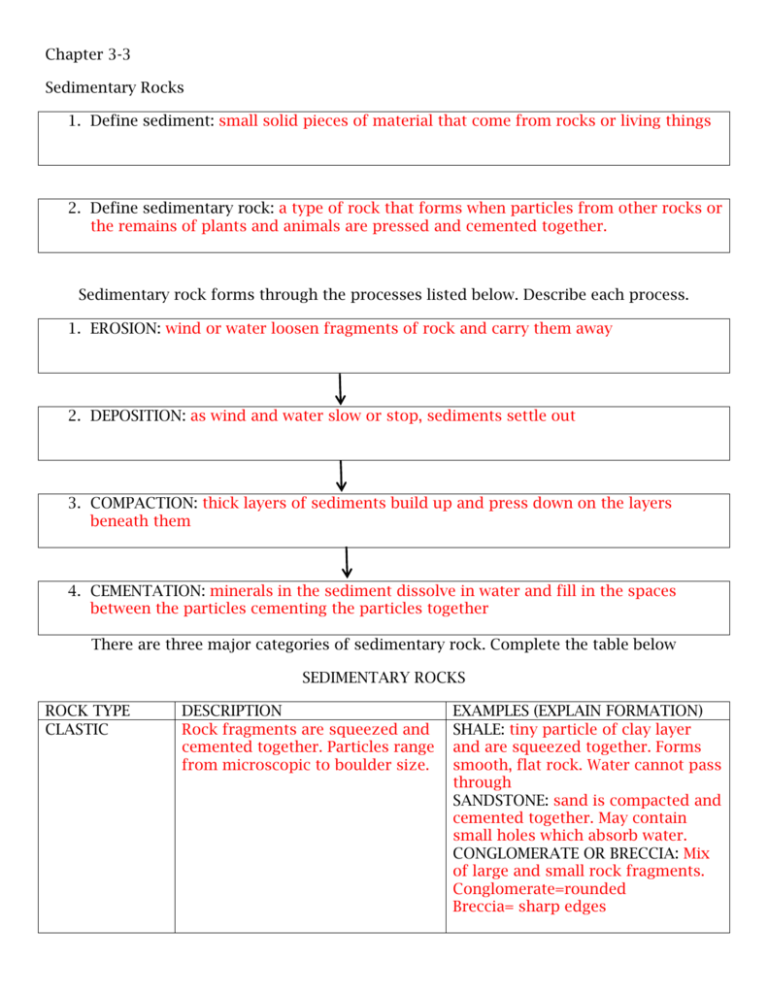Chapter 3-3 Sedimentary Rocks 1. Define sediment: small solid
advertisement

Chapter 3-3 Sedimentary Rocks 1. Define sediment: small solid pieces of material that come from rocks or living things 2. Define sedimentary rock: a type of rock that forms when particles from other rocks or the remains of plants and animals are pressed and cemented together. Sedimentary rock forms through the processes listed below. Describe each process. 1. EROSION: wind or water loosen fragments of rock and carry them away 2. DEPOSITION: as wind and water slow or stop, sediments settle out 3. COMPACTION: thick layers of sediments build up and press down on the layers beneath them 4. CEMENTATION: minerals in the sediment dissolve in water and fill in the spaces between the particles cementing the particles together There are three major categories of sedimentary rock. Complete the table below SEDIMENTARY ROCKS ROCK TYPE CLASTIC DESCRIPTION Rock fragments are squeezed and cemented together. Particles range from microscopic to boulder size. EXAMPLES (EXPLAIN FORMATION) SHALE: tiny particle of clay layer and are squeezed together. Forms smooth, flat rock. Water cannot pass through SANDSTONE: sand is compacted and cemented together. May contain small holes which absorb water. CONGLOMERATE OR BRECCIA: Mix of large and small rock fragments. Conglomerate=rounded Breccia= sharp edges ROCK TYPE ORGANIC DESCRIPTION Remains of plants and animals are deposited in thick layers EXAMPLES (EXPLAIN FORMATION) COAL: remains of plants that build up into layers LIMESTONE: Shells of animals pile up as sediment on the ocean floor. Pressure compacts lower layers. Some shells dissolve and the calcite combines with water to form a cement. Chalk is a form of limestone CHEMICAL LIMESTONE: Calcite dissolves in water and forms a solution. When water evaporates it forms limestone. ROCK SALT: Forms when sea water evaporates, leaving salt behind. How and why are sedimentary rocks used? Sedimentary rocks are soft enough to be cut into blocks or slabs that are used in buildings. Limestone is also important in the smelting process.







